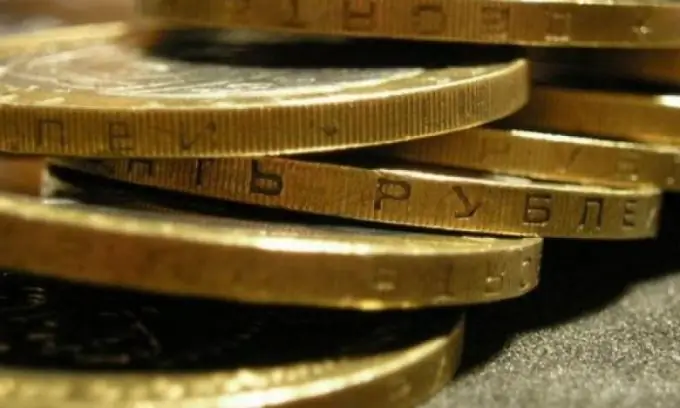- Author Nora Macey [email protected].
- Public 2023-12-16 10:17.
- Last modified 2025-01-23 08:47.
In most countries of the world, a variety of coins are in use. No matter how they are replaced by all kinds of electronic money and plastic cards, coins are still alive and widespread.

Coin tradition
In terms of coin turnover, Russia is no exception, and although not so long ago the famous penny died out due to its meager cost, metal money in Russia exists, however, already in different denominations.
The world's coinage traditions are not much different. The only thing that changes is the design of the coins and their composition, or rather the alloy from which they are made.
Copper-based alloys have become traditional all over the world for a long time. There is nothing surprising in this, since initially, after the transition from minting money from noble metals, it was copper that reigned in the coin business. As a bargaining chip, copper money existed in the days of ancient Rome.
What are coins made of?
Modern Russian coins are not made of any single metal or alloy. Much depends on the year of issue and the denomination.
Coins of one kopeck and five kopecks were made of steel with subsequent coating with cupronickel, representing the so-called clad coins.
The bulk of the ten and fifty kopeck coins issued before 2009 were made of a special copper-zinc alloy. But, starting in 2006, these coins began to be produced from steel clad with the Tompak alloy, created on the basis of copper with zinc and other elements.
Coins of higher denomination, one and two rubles, were originally made from cupronickel. This continued until 2009, but later they began to be minted with steel and plated with nickel.
Until 2009, five-ruble coins were minted from copper with cupronickel plating. Only since 2009, the production of steel five-ruble coins with a nickel alloy coating has been started.
Since 2009, ten ruble coins have been minted from brass-plated steel.
History
But the Russian coin did not always gravitate towards iron. There was a period when a bimetallic coin, which was quite difficult to manufacture, but spectacular, was minted in large quantities. So, in 1991, a ten-ruble coin was minted, in which the inner part was made of a copper-zinc alloy, and the outer part was made of cupronickel.
After the curtailment of the minting of this coin in 1992, bimetallic coins in denominations of fifty and one hundred rubles were issued into mass circulation.
At present, in addition to mass coins, collectible, gift, and commemorative coins are periodically minted. They use gold, silver, all the same bimetal with the only difference that modern commemorative coins have a ring made of a copper-zinc alloy and a core of cupronickel.






